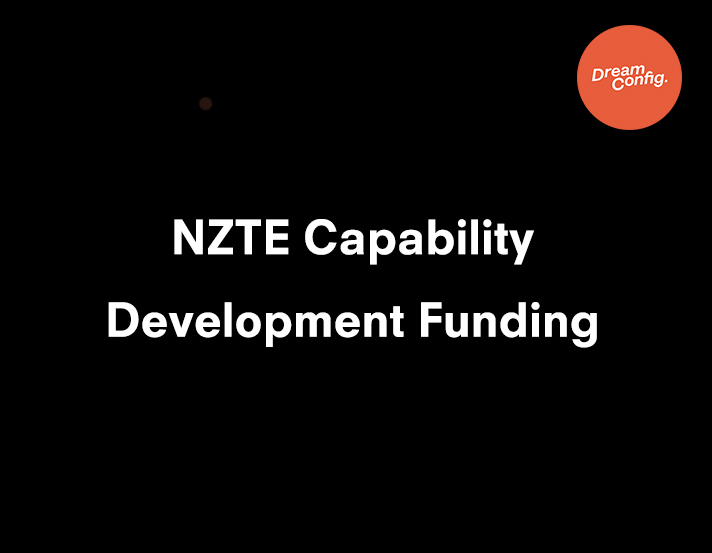Thoughts
Unless you’ve buried your head in the sand in 2024 (and we wouldn’t blame you if you have), you’ve likely heard of AI.
The digital world is buzzing with chatter about its transformative potential.
Like with any tech trend, we decided to observe the AI explosion from the sidelines before jumping in with our take.
Now that the honeymoon phase of AI has passed, let’s talk about its practical applications and implications for 2025.
In this article you can expect to learn the basic applications of AI we’re experiencing right now, as well as practical examples about how you can start to leverage it within your business today.
Across industries, there’s no single obvious application of AI guaranteed to revolutionise your operations…yet. But change is coming, and understanding where to focus your efforts is crucial.
Here’s what leveraging AI in 2025 could look like for businesses, governments and individuals alike.
What Does AI Actually Mean?
AI is a broad term that encompasses various subsets, such as Generative AI, Large Language Models (LLMs), and AI agents. Here’s a quick overview of these terms:
- Artificial Intelligence (AI): A system or machine capable of performing tasks that require human intelligence - problem-solving, learning, and decision-making.
- Generative AI: AI designed to create new content, from text to images using patterns identified in training data (e.g., ChatGPT or Claude).
- LLMs (Large Language Models): AI models trained on vast datasets to generate human-like text, answering questions or writing essays with contextual awareness.
- AI Agents: Autonomous systems that can perceive their environment, make decisions and take actions to achieve specific goals.
The Problem with AI Right Now
Despite the hype, the integration of AI into existing business models remains slow. Bold predictions from the early ChatGPT era in 2023 suggested rapid transformation, yet most applications remain focused on surface-level improvements - workflow efficiencies rather than revolutionary shifts.
As businesses and governments continue to struggle with basic digitisation, let alone the complexities of layering AI into their operations, we’re yet to see any significant evidence of what some are saying is the greatest transformational technology shift since the industrial revolution.
AI’s current impact mainly revolves around improving workflows and efficiency. For example, businesses use AI to optimise customer service or marketing funnels rather than to replace entire job categories. However, as these technologies continue to rapidly evolve, AI will become essential for scaling operations, enhancing customer experiences and unlocking new business models.
So the real underlying issue we’re seeing is that many organisations still aren’t equipped for digital transformation. The gap between expectations and reality is not just a technological challenge but an organisational one. Many organisations lack the digital maturity to build a cohesive framework for welcoming useful AI integrations into their business.
To truly embrace AI effectively, businesses still need cohesive digital landscapes. Integrating AI successfully requires a solid base of digital tools, processes and data infrastructure. Without these foundations, AI adoption risks becoming an expensive experiment rather than a transformative success.
AI’s Impact in Action
So how can AI be leveraged to help tackle operational inefficiencies and improve customer experiences today? The answer requires understanding how AI fits into the broader organisation's business goals, infrastructure and user experience. Success really comes from blending AI with an organisation’s unique challenges and opportunities.
Here are some examples of how AI is already reshaping our customers industries and where it’s likely to accelerate even further in 2025:
- AI for User Testing and Marketing Funnels
Companies increasingly rely on AI to analyse user behaviour, refine their marketing strategies, and optimise conversions. For example, tools like those implemented for Wanaka iSite use AI to test website user journeys, predict customer preferences and suggest itinerary adjustments. This not only improves the user experience but also increases engagement and revenue for businesses.
- AI in Tourism: Trip Planners and Personalisation
The tourism industry is rapidly adopting AI to enhance traveller experiences. Platforms like Booking.com and TripAdvisor are integrating AI-powered trip planners that recommend destinations, activities, and accommodations based on user preferences. Similarly, the Neat Places project showcases how AI can help users explore curated recommendations and geolocated attractions, bridging the gap between discovery and action.
- Personal Workflows: AI in Everyday Use
On a personal level, AI tools are revolutionising how we work. Apps like Granola summarise meetings, while ChatGPT assists with everything from SEO strategies to copywriting. As highlighted in Every, these tools streamline workflows, saving time and boosting productivity. These individual wins are already compounding to drive larger organisational efficiencies.
Preparing for the AI Future
It’s clear that AI offers countless opportunities for innovation, but leveraging it effectively does require a certain level of preparation to get the most out of it.
The key is not to assume that AI alone can reshape operations and improve customer experiences without identifying where and how it can be leveraged on top of existing business processes and digital strategies.
Businesses that already have these programmes in place will win when it comes to more seamless AI adoption versus those that will need to take a few steps back in order to move forward.
So if you haven't already, there is no better time to start thinking about what your business strategy around AI could look like.
To summarise, here are three takeaways for businesses looking to make the most of AI in 2025:
-
Lay the Foundations: Before diving straight into AI opportunities, ensure your existing digital landscape is robust. A product like our Dream Discovery can help businesses create a cohesive digital strategy and AI roadmap, making it easier to adopt AI when the opportunity presents itself.
-
Think Operationally: How can you use AI to tackle low-hanging fruit, such as automating routine tasks or refining workflows internally? Don’t just think about the immediate benefits, but also areas where longer-term gains may exist.
-
Focus on Customer Experience: Where does further personalising the customer journey through AI-driven products or services that you’re already using naturally occur? Alternatively, how does a new AI-assisted feature enhance your existing customer experience? The goal is not to implement AI for the sake of having AI. It’s to use AI to solve real business problems and create real value for customers.
As Michael from Every aptly said, “With AI, anything that nearly works now might be fully functional - and feel like magic - in only six months, and could be ubiquitous in a year.”
Our final take: 2025 will not be about AI versus humans; it will be about those who learn to harness AI effectively versus those who don’t.
Are you ready to leverage AI and embrace the future? How will you be experimenting with AI in 2025? Let’s start the conversation today.
To learn more about our AI preparation offerings click here


























